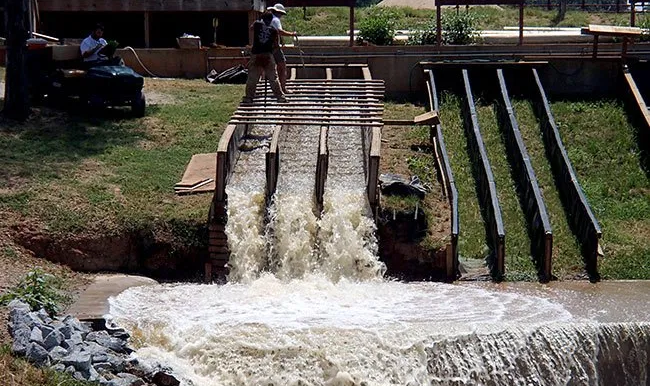By Joel Sprague and Jay Sprague – The use of stormwater management technologies to drain developed areas with an emphasis on engineered infiltration systems and storage devices has expanded dramatically in the last two decades. In some parts of the world these engineered infiltration and storage systems are referred to as sustainable drainage systems (SuDS). In other areas, including the U.S., they have been routinely referred to with the very generic phrase best management practice (BMP). More recently, these wide-ranging technologies are recognized as part of a very large family of products and technologies under the umbrella term Stormwater Control Measure (SCM).
SCM PERFORMANCE TESTING – CONSTRUCTION PHASE TECHNOLOGIES
TRI is an independent third-party commercial laboratory offering full-scale performance testing of erosion control products and sediment retention devices, also known as construction phase SCMs. Of note, TRI’s labs are the only laboratories independently accredited to perform standardized large-scale performance tests of erosion control products and sediment retention devices, including ASTM D6459, ASTM D6460, ASTM D7351, and ASTM D5141. Many of our test results are available to the public and can be accessed at here.

POST-CONSTRUCTION PHASE TECHNOLOGIES
For a number of years, TRI has evaluated the short- and long-term structural integrity of buried stormwater quality units in accordance with ASTM F2418 and F2787. In 2018, TRI expanded its capabilities to include the large-scale testing of post-construction SCMs that are used as offline or inline treatment devices along storm drain pipe lines to remove stormwater-borne pollutants. These systems are commonly referred to as Manufactured Treatment Devices (MTDs) and are typically precast concrete or fabricated plastic chambers with special features to maximize pollutant removal as stormwater passes through them prior to being discharged into public waters.
An MTD can employ settling, filtration, and/or other processes to remove pollutants from runoff. MTD testing is generally based on ASTM standards (C1745 and C1746), while nutrient removal testing evolves from collaboration with product manufacturers to establish the appropriate simulation of runoff quantities and nutrient concentrations.
RELATED: Full-Scale Trafficking of Geosynthetic-Reinforced Road Sections
To date, performance evaluations have been governed by leading regulators, such as the New Jersey Department of Environmental Protection (via the NJCAT program) and the Washington State Department of Ecology (via the TAPE program). But, looking to the future, the regulators and the MTD industry are working together to establish a nationwide verification/certification program based on international standards developed by ASTM.
AN UPDATE ON SCM CHARACTERIZATION IN ASTM STANDARDS
Development of standards for post-construction SCMs is largely taking place in ASTM’s Subcommittee C27.70 on Precast Concrete Products for Stormwater Management. In May 2019, TRI’s Technical Director Joel Sprague was appointed to chair this subcommittee. With ambitious goals of standardizing testing and evaluation protocols that are compatible with the expectations of the technical experts at NJCAT and TAPE, the subcommittee hopes to have as many as eight new standards and three revised standards out for ballot this fall. The best way for interested parties to stay abreast of the progress on developing standards is to join ASTM (www.astm.org), and Committee C27/Subcommittee C27.70. For the modest cost of $75, members receive all ballots for consideration, and, if choosing Volume 04.05 (free with your membership) all relevant standards as they are approved.
Joel Sprague, P.E. is Technical Director and Jay Sprague, CPESC, is Lab Director for TRI Environmental – South Carolina. Learn more about the testing services and research conducted at their labs at www.erosiontest.com.












